Hi- Fi review - TRON Convergence Phono Stage
TRON Convergence Phono Stage
Atom - the smallest unit of any chemical element, consisting of a positive nucleus surrounded by negative electrons.
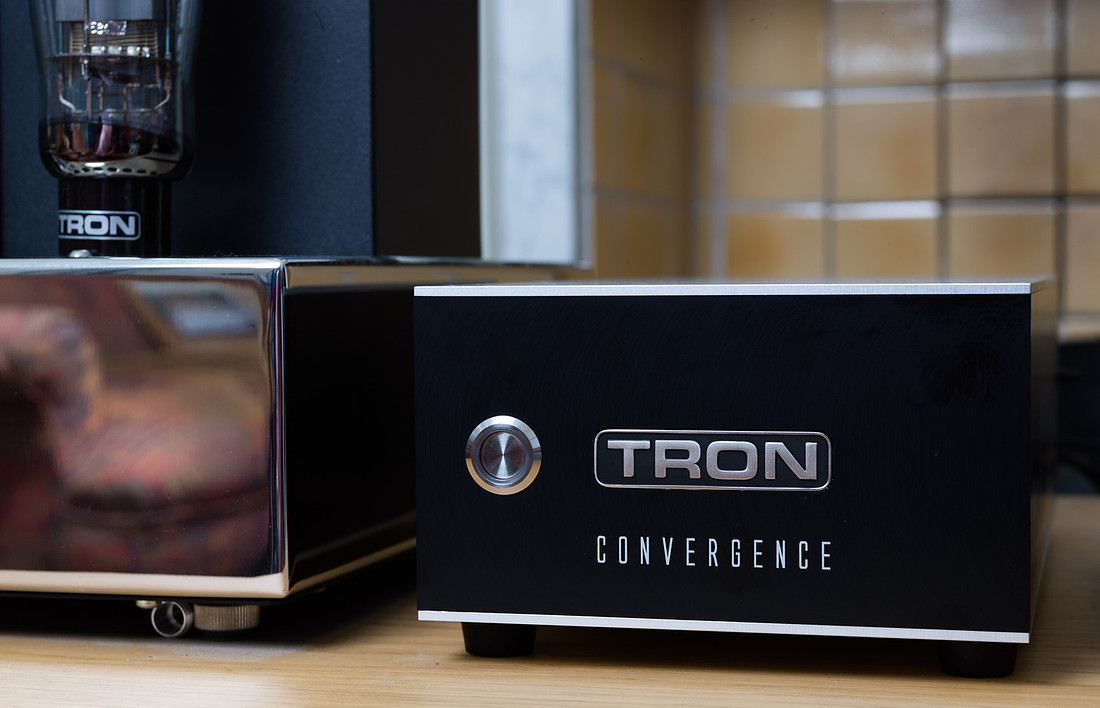

This new phono stage from TRON is one Mighty Atom. A new circuit from designer, Graham Tricker, with an ultra short signal pathway to rival masters of electronic solid state miniaturization, such as Devialet.
In his new design, every component in the signal pathway (even the RCA sockets) is mounted directly onto one custom board. Short signal pathways help reduce circuit noise and may help in creating a more dynamic sound. The circuit is based around two low noise 12AX7 double triodes with a single 12AU7/5814 driver valve. An earth lift switch is located inside on the board, to help those systems with potential earth loop problems. High quality film capacitors, resistors and SUTs (MC Option) are neatly placed with TRON’s usual impeccable build quality.
The power supply is mounted in the same chassis, separated from the signal boards by a metal shield. No nasty wall wart for this high-end unit at a budget price. The rear plate holds two pairs of high quality gold plated phono sockets, a milled tonearm earth post and a standard IEC power socket. The unit is dual voltage and rated at 240V 50Hz and 120V 60Hz.
Everything is encased in a smart black and silver case with aluminum top and bottom plates. The case looks every bit as well made as the top of the range Syren II with security torx screws in countersunk holes. It smacks of real attention to detail.
If you are used to the normal TRON full width chassis, then you will be pleasantly surprised at the compact size. It is 170mm wide x 100mm high x 335mm deep – i.e. about a third of the width of the normal TRON Syren II and Seven units. But even though it’s compact, this is no lightweight – it weighs 3.2kgs, thanks to the high quality power supply transformer and beautiful casework.
That’s the boring bit over, now for the listening. I plugged in my Allaerts MC1B moving coil into the back of the TRON Convergence. The MC1B is mounted on my Schröder Model 2 tonearm, which resides on my Platine Verdier turntable, powered by a GT Audio Battery PSU.
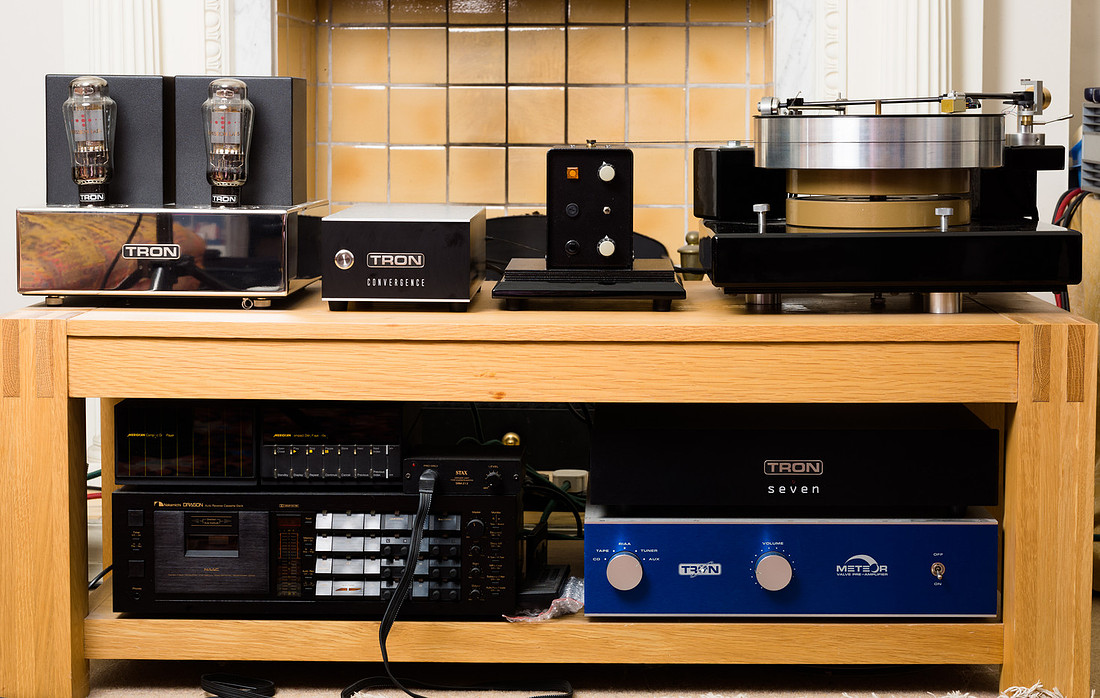

The TRON Convergence was fed into a line socket on my 10 year-old TRON Meteor pre-amp, which also has its own on board MC phono input board for comparison. Power amplification comes from the 6W/Ch TRON Voyager SET, using a pair of EML 20B Triodes. The loud bits come from my Avantgarde DUO horns with the 225 Subs. Cabling is PHY-HP. The watts were supplied by a Power Inspired AG1500 mains regenerator.
First up, Gregory Porter’s “Be Good” LP (Motema 233796). I played this one first, as I know Gregory and his voice very well. We meet every year at the Cheltenham Jazz Festival, where he was first championed by Jamie Cullum. We chat about music, cameras and his family. I have heard him live on many occasions in large venues and in small intimate private parties.
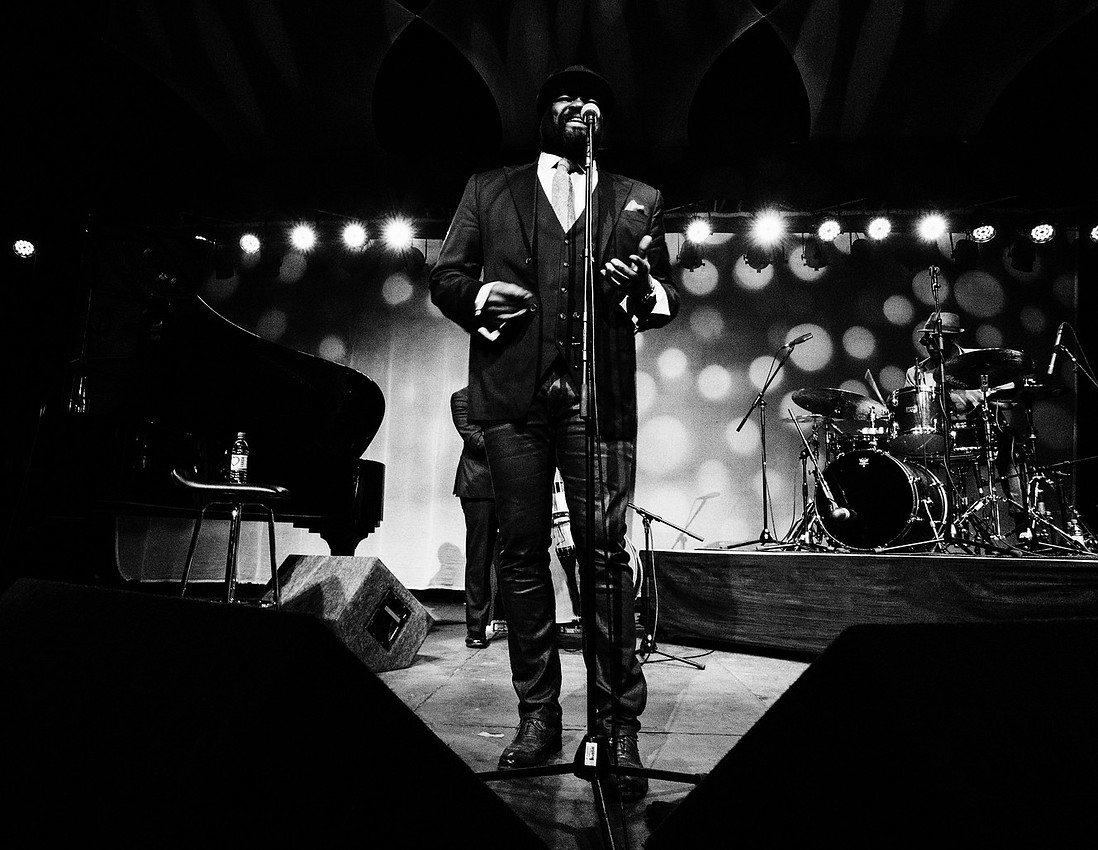

This LP is well recorded. More often than not, I listen to this with the other tonearm/cartridge on my Platine Verdier – a Decca FFSS MkIV C4E and Hadcock 228. At home, my Decca is fed into a one year-old bespoke TRON Seven Reference MM phono stage built specially to match my Decca.
The Decca has such dynamism, which is apparent when listening to the percussion, played by Emanuel Harrold, and the piano, courtesy of Chip Crawford. Convincing piano and percussion are probably the two most difficult instruments to emulate on any audio system. We have a Steinway Model B piano at home along with a vast array of percussion, courtesy of my wife, Sue, and my daughter.
Using the 10 year-old onboard MC phono stage of my TRON Meteor, the Allaerts MC has always lagged slightly behind the Decca/TRON Seven Reference in its ability to deliver convincing rimshots, cymbals and piano. But with the new TRON Convergence, the Allaerts MC1B suddenly comes to life. There is a real sense of verve to the music. The TRON Convergence has suddenly “Decca-rised” the Allaerts into a thing with real zing, without the harshness, which some say is a trait of Deccas. OK, the Allaerts/TRON Convergence isn’t quite as dynamic as the Decca/TRON Seven Reference, but the TRON Convergence is a big step up from the 10 year-old design of the onboard MC phono stage of the TRON Meteor.
Allied to this new vitality is real width and depth to the soundstage, which the Allaerts MC cartridges are famed for. There is a delicacy to the vocals, and a tonal richness, which improved on the presentation fed through the older onboard phono section of the TRON Meteor. All of this is set against a completely silent background. There is no hiss or circuit noise, even with the volume turned up – an amazing feat when you realise that the Avantgarde Duo horns reveal any noise with their 104 dB/W sensitivity.
Up next was Wilko Johnson’s collaboration with Roger Daltrey – Going Back Home – his award winning swansong album, reviving the famous Chess label (CRL2014). This album has real drive, spontaneity all through the tracks. Recorded in only 8 days, it is the antithesis to a Brian Wilson album, genius that the Beach Boys guru is. It is Roger Daltrey’s best album since the heyday of the Who.
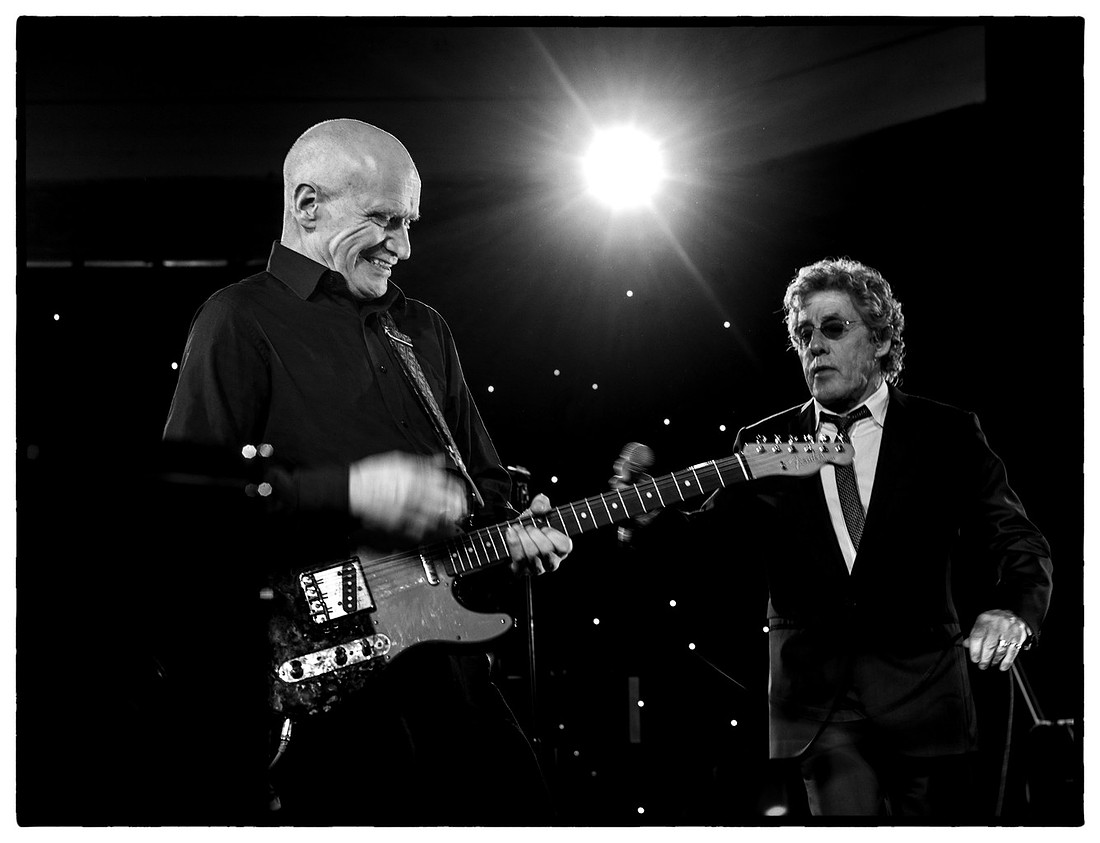

With the TRON Convergence, you can hear Norman Watt-Roy’s funky bass lines driving the beat and Steve “West” Weston’s blues harmonica playing sounds right there in front of you. To top it all, Wilko’s choppy Telecaster and Roger’s vocals sound just as they should.
Finally, I put on Stephen Bishop-Kovacevich’s 1971 performance of the Greig Piano Concerto in A Minor, Opus 16 (Philips 412 923-1 with Sir Colin Davis conducting the BBC Symphony Orchestra). This is a beautifully recorded LP and worthy winner of a Rosette in the Penguin Classical Music Guide 30 years ago. The strings sound lush in the great Adagio, particularly the cellos. Set against this is SBK’s wonderful dramatic piano interpretation. With the TRON Convergence, the piano sounds convincing, more so than with the onboard TRON Meteor phono stage. OK, the piano was not as convincing as with the Decca C4E playing through the much more expensive TRON Seven Reference phono stage, but few cartridges reproduce piano as well as a Decca.
I only had a few hours with the new TRON Convergence. But, boy is it good! You would think that not much has changed in phono pre-amplifier design in ten years. Well maybe, for many, it hasn’t. But the TRON Convergence was palpably better than the ten year-old design on my TRON Meteor pre-amp. So what, you may say. But the TRON Meteor was a £7k item ten years ago, with the phono stage accounting for at least £3k of its new value.
It isn’t quite as good as my newer £4.5k TRON Seven Reference, missing a little delicacy and air between the instruments. The dynamics are almost, but not quite as good on the TRON Convergence as its more expensive brother. But at only £1000 for the MC version and £900 for the MM, the TRON Convergence is a steal. Unless your system is ruthlessly revealing, you might not notice the difference between the £1k TRON Convergence and the £4.5k TRON Seven Reference.
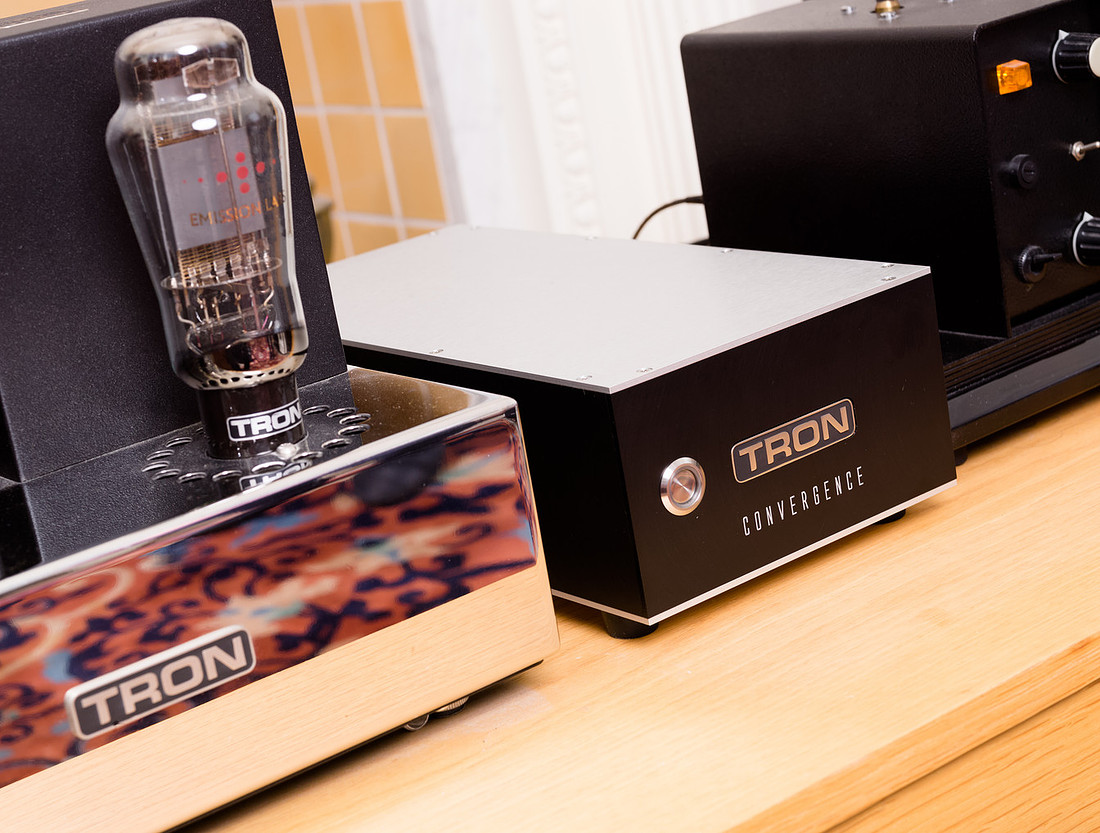

So there you have it. The TRON Convergence is like an Ariel Atom – small, stripped out, lean, bare, visceral. That’s what music is meant to do to you – make you feel raw with the emotion. Just like the Ariel Atom, the TRON Convergence gives you stellar performance at a surprisingly small and affordable price. Take a TRON Convergence for test drive in your system, and I promise you will be grinning from ear to ear!
Comments
Jeff
http://www.printradiant.com | http://www.printlinkage.com | http://www.hitsticker.com | http://www.stickermac.com | http://www.roofingstar.ca